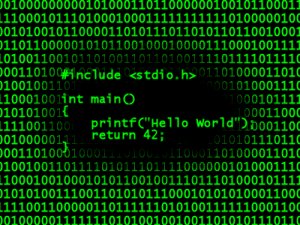This post will compare the tactics of applying computer science to high schools in the United States, Israel, and Europe.
In the United States, there is no standard national high school computer science curriculum. In the fall of 2004, the Computer Science Teachers Association surveyed 14,000 high school computer science, programming, and application teachers and they provided the following findings. Many high schools that offer the Advanced Placement computer science course teach the class at a lower level than the AP curriculum suggests. Most of these courses have a greater emphasis on programming, and do not always cover the hardware, ethics, graphics, or web development topics. Courses that focus on applications are less likely to cover programming and vice versa. Along with this, teachers believe that students do not take computer science courses because the students cannot fit them into their already tight schedules. Also, teachers are not informed of the rules concerning the content of the curriculum, how to get certified how to teach these courses, and find the “rapidly changing technology” a serious challenge in teaching computer science.
In Israel, computer science had been an autonomous subject in the high school curriculum for almost four decades. When the curriculum was first designed, it mainly focused on programming but since 1991, the curriculum was modified to put more emphasis on principles and theoretical aspects. The program has a basic and advanced level and includes mandatory Fundamentals and Software Design modules and elective modules which include Theory and Applications. This program was made successful because the government planned the implementation process and received much support. This support included the development of course materials (learning materials for students and corresponding teacher guides) and an intensive in-service teacher training program.
In Europe, every country has a different curriculum policy. A number of countries have given up on the computer science idea and instead are having more of an Information Technology focus which is less rigorous and less embedded in science. In 2004, a study of twenty European economic Union member states as well as Bulgaria, Iceland, Norway. and Romania showed that studies of information and communication technology is a part of the mandatory curriculum in the upper secondary level in all countries. How the curriculum is implemented, however, differs in each country. In Ireland, students do not study programming in secondary schools; in Finland and Italy, information and communication technology is taught as a tool to support learning in other curriculum areas; and in Poland, all students study informatics in primary and middle school. High school students here also have to take a mandatory Information Technology course that includes topics such as networks and multimedia tools for managing information.
As one can see, our country can learn much from other countries about how to incorporate computer science courses in our high school curriculums. These countries show that it is not an impossible feat and would benefit our high school students to a great extent.
Source: CSTA Curriculum Improvement Task Report – Computer Science






